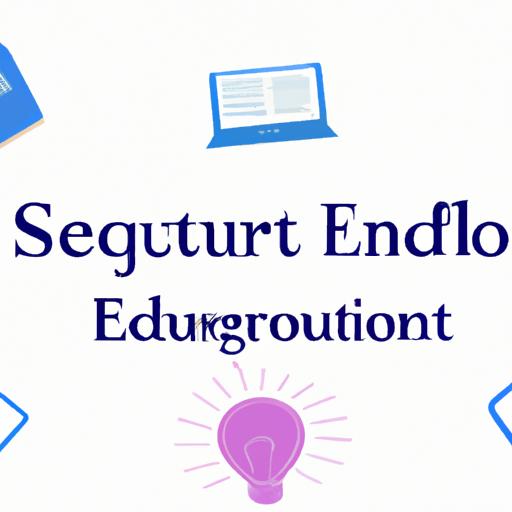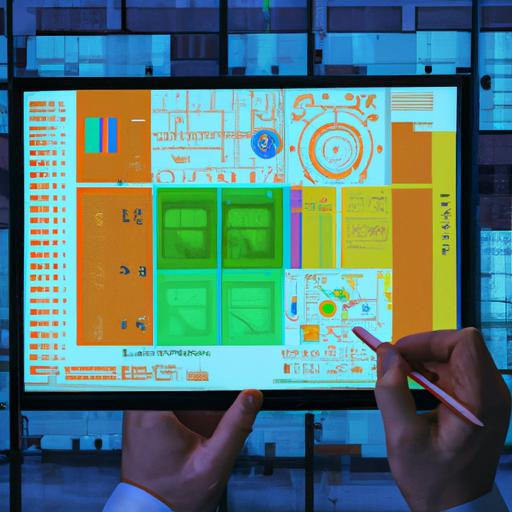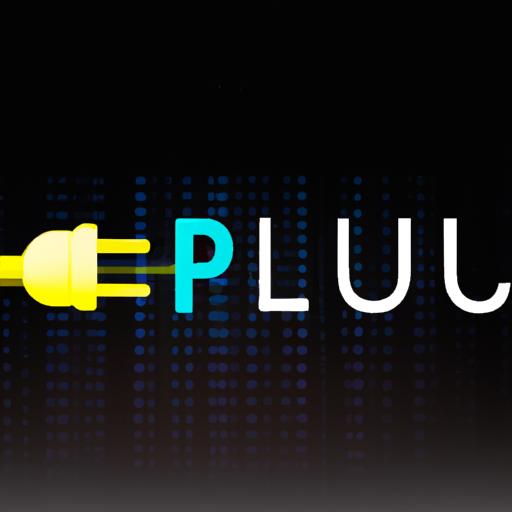List of Educational Software: Empowering the Future of Learning

Education has evolved dramatically with the advent of technology, and educational software has become an integral part of modern classrooms. But what exactly is educational software, and why is it so crucial in today’s education landscape? In this article, we dive into the world of educational software, exploring its definition, significance, and the comprehensive list of options available to educators and students alike.
Defining Educational Software
Educational software, also known as e-learning software, refers to computer programs and applications designed specifically to facilitate learning and enhance academic experiences. These software solutions are tailored to cater to various educational needs, from K-12 schools to higher education institutions. With interactive interfaces and engaging content, educational software aims to create an immersive learning environment, revolutionizing the way knowledge is acquired and retained.
The Importance of Educational Software in Modern Education
In today’s fast-paced world, traditional teaching methods alone may not suffice to meet the diverse learning needs of students. Educational software bridges this gap by providing dynamic and interactive learning opportunities. By incorporating educational software into classrooms, educators can tap into a vast range of resources and tools that facilitate personalized learning experiences, foster engagement, and promote critical thinking skills.
Moreover, educational software empowers students to take charge of their learning journey. With access to a plethora of educational applications and platforms, learners can explore subjects at their own pace, reinforcing understanding through hands-on activities, simulations, and interactive exercises. This personalized approach helps students grasp complex concepts more effectively, boosting their academic performance and confidence.
A Sneak Peek into the Article
In this comprehensive guide, I will walk you through the various types of educational software available today, each catering to specific educational requirements and areas of study. We will discuss the essential features to consider when selecting educational software, ensuring you make an informed decision. Furthermore, I will shed light on the numerous benefits of incorporating educational software into your teaching practices, highlighting the positive impact it can have on student engagement, knowledge retention, and overall learning outcomes.
So, let’s embark on this enlightening journey together and explore the vast realm of educational software. Join me as we uncover the top educational software providers and the transformative potential of these digital tools in shaping the future of education. Don’t miss out on the opportunity to revolutionize your classroom and empower your students with the best educational software available.
Types of Educational Software
In the vast world of educational software, various types cater to different educational needs and objectives. Let’s delve into the different categories of educational software based on their functionality and explore some notable examples within each type.
A. Learning Management Systems (LMS)
Learning Management Systems (LMS) are comprehensive platforms that facilitate the delivery, management, and tracking of educational courses. LMS software provides a centralized hub for educators to create and organize course materials, track student progress, and administer assessments. Popular LMS examples include:
- Moodle: An open-source LMS that offers a range of features including course management, assessment tools, and collaborative learning capabilities.
- Canvas: A user-friendly LMS known for its intuitive interface, extensive integration options, and robust communication features.
B. Interactive Whiteboard Software
Interactive whiteboard software transforms traditional whiteboards into dynamic digital tools, enabling educators to create interactive and engaging lessons. This software allows teachers to incorporate multimedia elements, annotate content, and encourage student participation. Notable interactive whiteboard software includes:
- SMART Notebook: A widely used software that offers a variety of interactive features such as touch-based interaction, multimedia integration, and collaborative tools.
- Promethean ActivInspire: An interactive whiteboard software that provides a range of tools for creating interactive lessons, including multi-touch functionality and access to a vast library of educational resources.
C. Language Learning Software
Language learning software provides students with interactive tools and resources to develop their language skills. These programs offer language lessons, vocabulary exercises, pronunciation practice, and cultural insights. Noteworthy language learning software includes:
- Rosetta Stone: A renowned language learning platform that utilizes immersive techniques and speech recognition technology to enhance language acquisition.
- Duolingo: A popular language learning app that gamifies the learning process, making it fun and engaging for users of all ages.
D. Math and Science Software
Math and science software assists students in comprehending complex mathematical and scientific concepts through interactive simulations, visualizations, and problem-solving activities. Examples of math and science software include:
- Wolfram Mathematica: A powerful software that provides computational tools and resources for various mathematical applications, including calculus, algebra, and statistics.
- PhET Interactive Simulations: A collection of free online simulations developed by the University of Colorado Boulder, covering a wide range of science topics, from physics to chemistry.
E. Virtual Reality (VR) and Augmented Reality (AR) Software
Virtual Reality (VR) and Augmented Reality (AR) software offer immersive experiences that enhance learning by creating virtual environments and augmenting real-world surroundings. Notable VR and AR software include:
- Nearpod VR: An educational platform that allows teachers to create and deliver interactive VR lessons, enabling students to explore virtual environments and engage in hands-on learning.
- Merge EDU: A platform that combines AR and VR technology to provide immersive learning experiences, offering interactive 3D objects, simulations, and virtual field trips.
F. Educational Games and Simulations
Educational games and simulations leverage gamification to make learning enjoyable and interactive. These software solutions incorporate game mechanics to engage students while teaching them specific subjects or skills. Examples of educational games and simulations include:
- Minecraft: An immersive game that promotes creativity, problem-solving, and collaboration, while also offering educational versions with tailored content for various subjects.
- SimCity: A city-building simulation game that allows students to explore urban planning concepts, develop problem-solving skills, and understand the complexities of managing a city.
With this diverse range of educational software options, educators can choose the ones that best align with their teaching objectives and engage students in interactive and meaningful learning experiences.
Benefits of Using Educational Software
Incorporating educational software into learning environments offers a myriad of advantages for both students and teachers. Let’s delve into the numerous benefits that this digital tool brings to the table, highlighting its positive impact on the educational landscape.
A. Enhanced Engagement and Motivation
Educational software injects an element of fun and interactivity into the learning process, captivating students’ attention and boosting their engagement. With gamified elements, interactive exercises, and multimedia content, students are more likely to stay focused and motivated throughout their educational journey. By transforming mundane tasks into exciting challenges, educational software ignites a sense of curiosity and enthusiasm, making learning a delightful experience.
B. Personalized Learning Experience
Every student has unique learning needs and preferences. Educational software caters to this diversity by providing personalized learning experiences. Through adaptive algorithms and individualized content, students can learn at their own pace and focus on areas that require more attention. This tailored approach ensures that each student receives the necessary support and resources, fostering a deeper understanding of the subject matter and promoting academic growth.
C. Improved Knowledge Retention
Educational software utilizes various techniques, such as interactive simulations, visual representations, and multimedia integration, to enhance knowledge retention. By presenting information in different formats and engaging multiple senses, students can better comprehend and retain complex concepts. Additionally, educational software often includes assessment tools that allow students to practice and reinforce their learning, further solidifying their understanding of the material.
D. Time and Resource Optimization
Traditional teaching methods often require significant time and resource investments. Educational software streamlines the learning process, allowing teachers to optimize their time and resources. With automated grading and progress tracking features, educators can focus on providing personalized guidance and support, rather than spending hours on administrative tasks. Furthermore, educational software provides a vast library of digital resources, reducing the need for physical materials and textbooks.
E. Performance Evaluation and Assessment
Accurate assessment is crucial for monitoring student progress and identifying areas that require improvement. Educational software offers comprehensive performance evaluation and assessment tools. Through real-time feedback, detailed reports, and analytics, educators gain valuable insights into each student’s strengths and weaknesses. This data-driven approach enables teachers to tailor their instruction to meet individual student needs effectively.
By incorporating educational software into classrooms, educators can unlock a world of opportunities, enhancing student engagement, personalizing learning experiences, improving knowledge retention, optimizing time and resources, and facilitating comprehensive performance evaluation. The transformative benefits of educational software are undeniable, shaping a brighter future for education.
Popular Educational Software Providers
When it comes to educational software, several renowned companies have made their mark in the industry. These providers offer a wide range of innovative solutions to cater to the diverse needs of educators and students. Let’s take a closer look at some of the top players in the field and explore their unique offerings.
A. Google for Education
Google for Education is a prominent name in the educational software realm. With their suite of tools and applications, Google empowers educators and students to collaborate, create, and communicate seamlessly. From Google Classroom, a robust learning management system, to Google Docs, Slides, and Sheets for collaborative work, Google for Education offers a comprehensive range of software designed to enhance the learning experience.
B. Microsoft Education
Microsoft Education is another major player, providing a suite of educational software solutions tailored for schools and institutions. Their offerings include Microsoft Teams, an all-in-one collaboration platform, and OneNote, a versatile digital notebook. With tools like PowerPoint and Minecraft: Education Edition, Microsoft Education ensures interactive and engaging learning experiences.
C. Adobe Creative Cloud for Education
Adobe Creative Cloud for Education caters to the creative needs of students and educators. It offers a suite of software, including Photoshop, Illustrator, and Premiere Pro, enabling users to develop their digital creativity and multimedia skills. With its intuitive interface and powerful features, Adobe Creative Cloud enhances visual storytelling and encourages innovative thinking.
D. SMART Technologies
SMART Technologies specializes in interactive whiteboard software and solutions. Their educational software, such as SMART Notebook, provides educators with a digital platform to create engaging lessons, interactive presentations, and collaborative activities. With SMART Technologies, teachers can bring their lessons to life while promoting active student participation.
E. Blackboard
Blackboard is a well-established name in the field of educational software, particularly in the higher education sector. Their software solutions, including Blackboard Learn and Blackboard Collaborate, facilitate online learning, content management, and virtual classroom experiences. Blackboard’s comprehensive suite of tools supports educators in creating dynamic and interactive online courses.
F. Moodle
Moodle is an open-source learning management system, widely adopted by educational institutions worldwide. With its versatile features and customizable interface, Moodle provides a flexible platform for online learning and course management. Educators can deliver engaging content, facilitate discussions, and track student progress effectively using Moodle’s user-friendly software.
These popular educational software providers continue to innovate and shape the future of education by offering cutting-edge tools and platforms. Consider exploring the offerings of these providers to find the software solutions that best align with your educational goals and requirements.
Conclusion: Empowering Education with the Right Tools
As we conclude this exploration of educational software, it becomes evident that these digital tools hold immense potential in transforming the landscape of education. By incorporating educational software into classrooms, educators can unlock a world of possibilities, offering personalized and engaging learning experiences to their students.
Throughout this article, we have discussed the definition of educational software and its importance in modern education. We have delved into the various types of educational software available, ranging from learning management systems to interactive whiteboard software, language learning tools, and virtual reality applications. Each type caters to specific educational needs, providing educators with a diverse range of options to enhance their teaching practices.
Furthermore, we have highlighted the essential features to consider when selecting educational software. Customization and adaptability allow educators to tailor the learning experience to individual student needs, while a user-friendly interface ensures seamless navigation. Progress tracking and reporting enable educators to monitor student performance, and multimedia integration enriches lessons with dynamic and interactive content. Collaboration tools foster teamwork and communication, while accessibility options ensure inclusivity for all learners.
By embracing educational software, educators can reap numerous benefits. Enhanced engagement and motivation, personalized learning experiences, improved knowledge retention, optimized time and resource utilization, and effective performance evaluation are just a few of the advantages that can be harnessed through the integration of educational software into classrooms.
In conclusion, as educators, it is our responsibility to embrace innovation and leverage the power of educational software to nurture a generation of lifelong learners. The future of education lies in the hands of those who dare to transform traditional classrooms into dynamic and interactive learning spaces. So, let us embark on this journey together and unlock the full potential of educational software in shaping the future of education.
Conclusion: So above is the List of Educational Software: Empowering the Future of Learning article. Hopefully with this article you can help you in life, always follow and read our good articles on the website: news.mail1s.com



